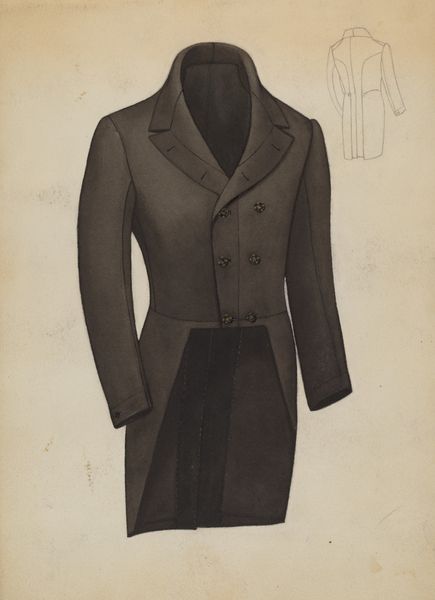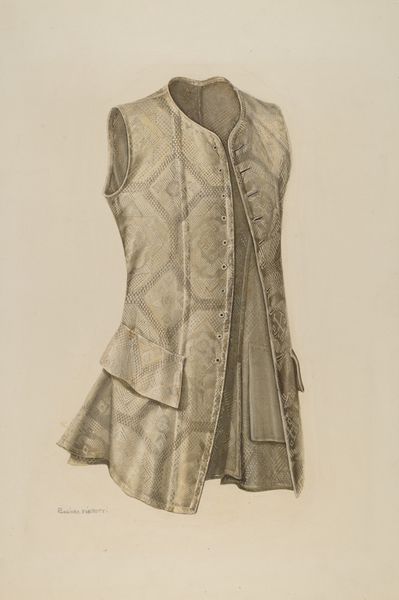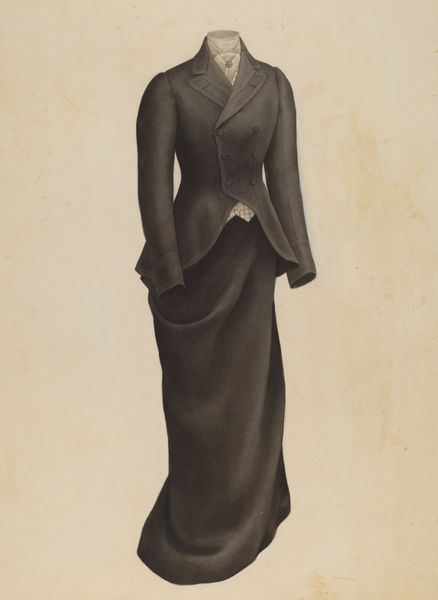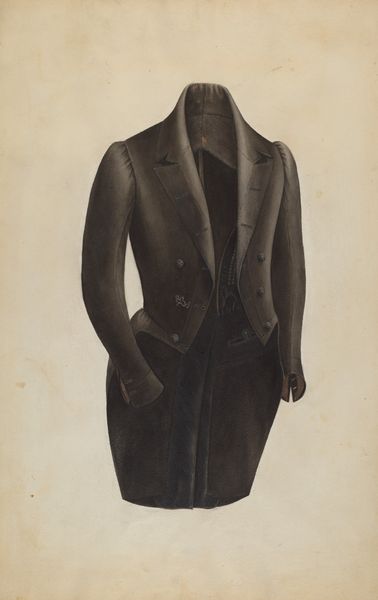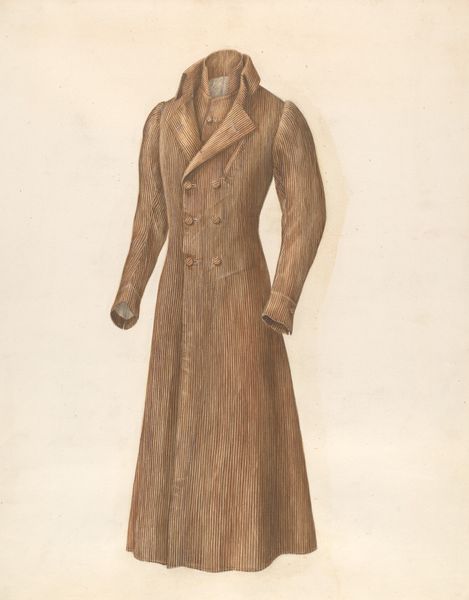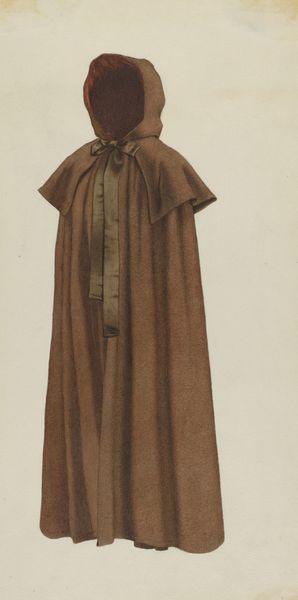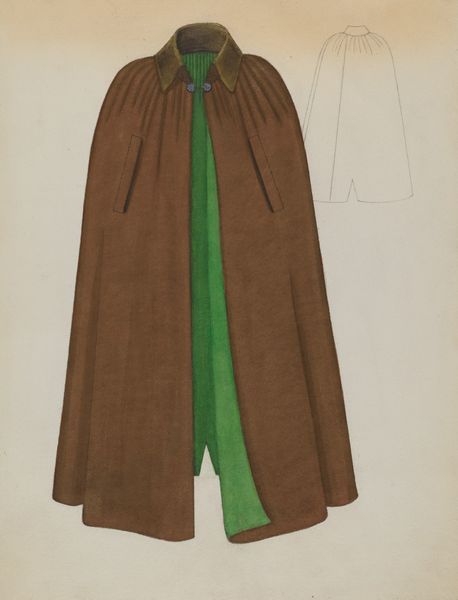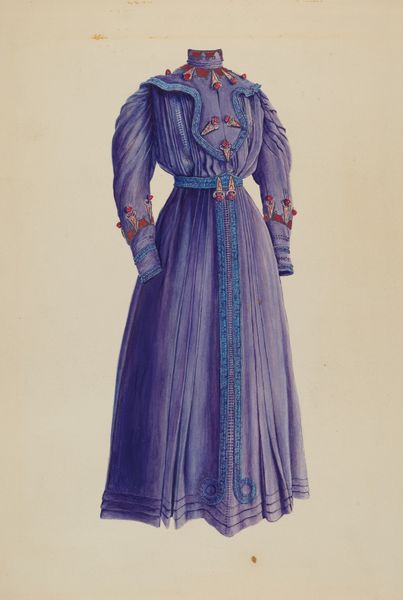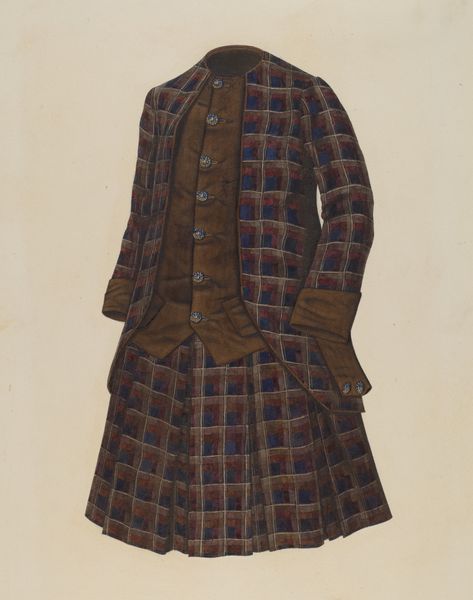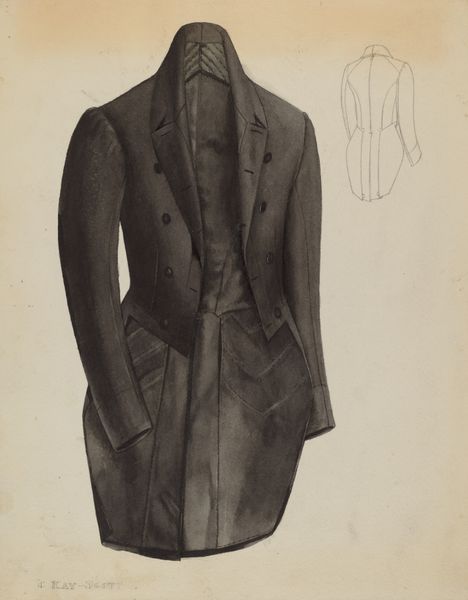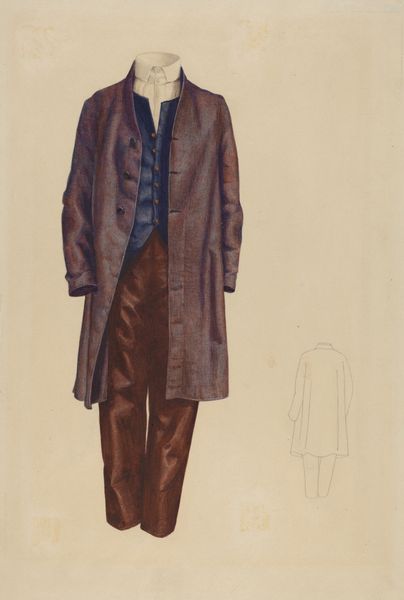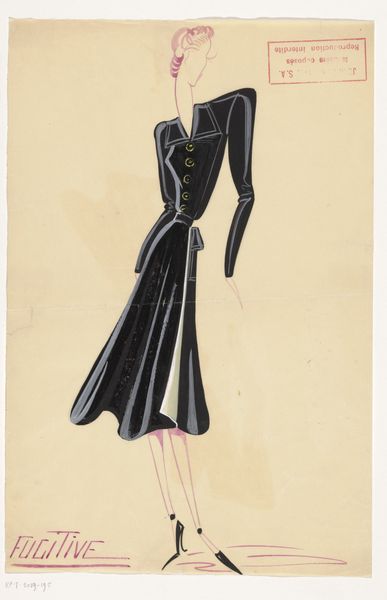
drawing, paper, pencil
#
drawing
#
charcoal drawing
#
paper
#
pencil
#
realism
Dimensions: overall: 48.7 x 29.5 cm (19 3/16 x 11 5/8 in.)
Copyright: National Gallery of Art: CC0 1.0
Curator: Here we have “Man’s Topcoat,” a work rendered between 1935 and 1942 by Henry De Wolfe, utilizing pencil, charcoal, and paper. Editor: It’s fascinating, really striking. The deep umber tone and careful detail evoke a sense of subdued elegance, yet there's something inherently unsettling about it—an abandoned coat, devoid of a body. Curator: Indeed, it presents a study in absence. Clothing as a carrier of identity, the silent witness. In terms of history, clothing has always been a social signifier, but here it becomes more like a phantom limb. What narrative does it suggest to you? Editor: It makes me consider social context of fashion in the late 30's into the early 40's. Double-breasted topcoats like these were symbolic of male authority and respectability. To find one disembodied…it whispers of the anxieties and the disappearances of men that took place during the time— the Second World War. There’s the implied, looming sense of loss. Curator: It's compelling to think of it within that historical frame. Consider how the meticulously rendered details—each button, each crease—only amplifies the sense of what's missing. We see the outer shell but lack the substance, a kind of psychological mirroring perhaps, reflecting anxieties about substance versus appearance. Editor: Yes! I'd even extend that to say it's a rumination on performance itself. The coat represents the performance of masculinity, stripped bare by the era's cataclysmic upheavals. Does the man make the coat, or vice-versa? Perhaps De Wolfe invites us to deconstruct such symbols and consider the individual obscured by their trappings. Curator: Precisely. It’s a somber reflection captured in quiet shades. The realism accentuates this palpable absence. Editor: It’s really been insightful to think about it like this, especially considering those looming anxieties and its ties to its history. Thank you for helping reveal this piece a bit more to me. Curator: My pleasure. Its emotional power certainly resides in those haunting questions.
Comments
No comments
Be the first to comment and join the conversation on the ultimate creative platform.
